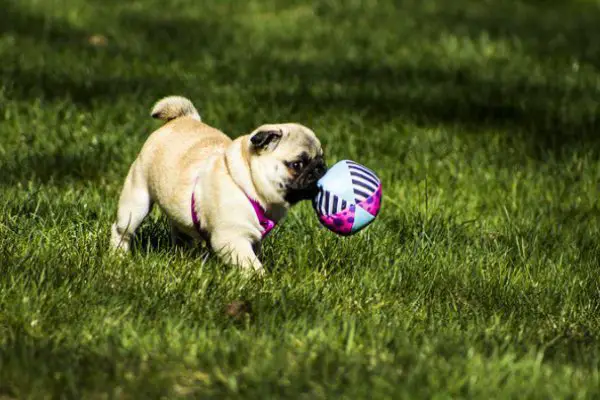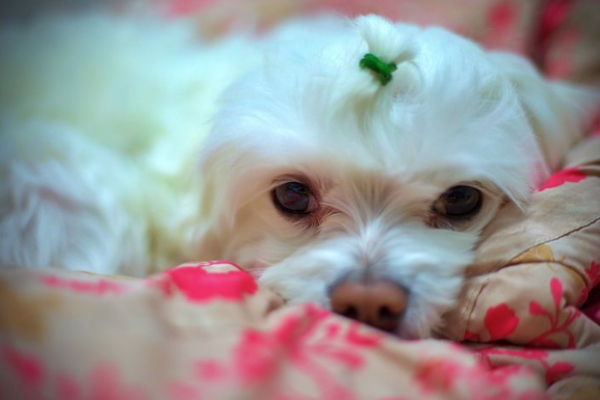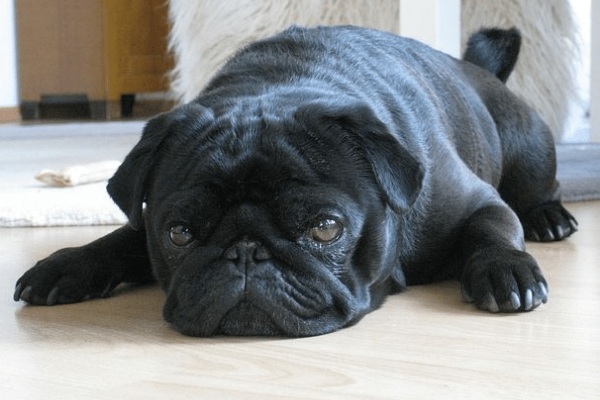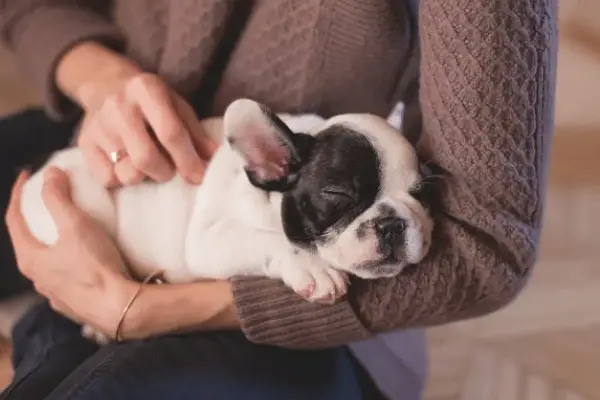Do Maltese shed: 9 Things That Causes Shedding & Tips

Maltese dog lovers always ask do Maltese shed, this is because no one loves to see fur everywhere in his home.
Every dog that has hair or fur sheds no doubt but the level, rate, or quantity of shedding differs from one dog to another.
I will answer the question do Maltese shed, I will also outline some circumstances that can cause Maltese to shed more than usual.
Finally, I will highlight some potential ways to control shedding in Maltese dogs, if that interests you continue reading.
Do Maltese shed
Maltese dogs don’t have undercoats, which means they don’t shed much, however, Maltese shed their hair on occasion, their shedding rate is rather low when compared to other dog breeds.
Their hair is commonly hung in their long coat because they shed less, giving the impression that they do not shed.
Due to their thick, long coats, which may be seen during grooming, Maltese appear to shed more than other dogs during grooming.
The pace at which a Maltese sheds hair is determined by a variety of variables that we shall detail and explore.
Why do Maltese shed
Here are some of the most prevalent causes of excessive shedding in Maltese that you should be aware of:
1. Poor diet
A Maltese that eats an unbalanced diet will lose a lot of hair. Maltese suffer from malnutrition in the same way as people do.
A nutritional imbalance in Maltese can cause considerable hair loss. As a result, pay attention to what you give your Maltese.
Whether it’s winter or spring, if you notice any especially severe shedding after changing your puppy’s food, switch back or visit a veterinarian.
A proper dog diet has the minerals and vitamins needed to keep skin healthy, hair follicles robust, and discharges to a minimum.
Omega-3 fatty acids have been shown to aid in the development of healthy hair in Maltese dogs, therefore incorporating them into their diet is always a smart idea.
A moist diet is crucial in the lives of Maltese because dry skin or dehydration can cause unwanted hair loss.
2. Changes in hormones
Hypothyroidism is a hormonal disease in dogs that leads to considerable hair loss, as we all know.
It affects the thyroid glands in Maltese people, resulting in a lack of thyroxine, a hormone that controls metabolism.
Hair loss, a dull and thin coat, discolored skin spots, weariness, a lack of interest in exercise, and weight gain are all symptoms of this illness.
Your female Maltese heat cycles may alter how much fur she sheds at any given moment if she isn’t spayed.
At the conclusion of her periods, you could notice her shedding more hair.
All of these causes of hair loss are covered under hair loss caused by hormone changes.
3. Frequent fluctuations in body temperature
Excessive shedding should occur when a Maltese’s body temperature rises over average (101 to 102.5 degrees Fahrenheit).
As a result, don’t overwork your Maltese; a daily stroll of 15 minutes should suffice. You’ll have hair all over your house if you overwork them in hot weather.
Keep an eye on their temperature and keep them away from anything that might cause it to rise. A nice example is playing with your Maltese in the heat of the day.
A rise in body temperature may create respiratory issues, leading to a lot of shedding, due to their size.
4. Excessive stress
Stressed dogs lose their hair, and the Maltese are no exception.
Changing daily routines or mealtimes may be stressful for Maltese, so keep that in mind.
Excessive or infrequent discharges are common in overworked Maltese because of hormonal fluctuations.
When things become exciting, your Maltese will start flinging hair more frequently for the same reason.
You notice that you have hair all over your body when you get home from work, for example.
As a result, Maltese separation anxiety, sadness, and other negative emotions are inextricably linked to stress-related dog hair loss.
We’ll examine several common Maltese shedding control solutions because you can’t completely prevent Maltese from shedding.
5. Skin diseases
Hair loss in Maltese can be caused by skin illnesses, bacterial infections, fungal infections, and infestations.
These health issues typically cause a lot of discomforts and can lead to hormonal imbalances, which can result in hair loss.
Bacterial illnesses like salmonella can be contracted by eating raw foods like raw chicken.
A fungal infection, which can occur if your Maltese comes into contact with mold or other forms of fungi, can cause the condition.
If snacks and dry meals are not properly preserved after each use, they might grow moldy.
Remember that Maltese are inquisitive dogs that will smell out whatever they may discover in the cracks of your house.
Ensure that the areas where your Maltese spends time are mold-free and that he does not ingest spores from the ground when out for a walk.
6. The age of the Maltese
Between the ages of five and seven months, Maltese puppies are reported to go through a puppy stage during which they lose their babies.
However, you might argue that older Maltese lose more hair since they are larger and have a larger surface area of hair.
Over the age of eight, Maltese are more prone to developing health problems, which can lead to hair loss.
When Maltese puppies outgrow their puppy coat, which happens around four months, they shed a lot more.
Then, until they reach adulthood, they will shed copiously. Excessive shedding on sleeping locations is a Maltese death symptom to watch out for as they get older.
7. Parasite infestations
Fleas, mites, and lice can infest Maltese who go outside, but they shed a lot as a result of the infection.
A single bite from one of these bugs can result in a variety of problems, including excessive shedding.
Maltese are irritated by bug bites, and despite the small amount of shedding, this bite may result in shedding.
If your Maltese has a parasite, she will continue to shed the parasite until the parasite is gone.
As a result, the dog may feel irritated and itchy, and in some cases, bald patches can develop.
Flea bites can cause serious allergic responses in your Maltese, leading to excessive shedding, so keep him away from them.
8. Side effects of medications
If you give your Maltese medicine and it starts shedding right away, the medication’s side effects may be contributing to the unnecessary shedding.
Certain medications, on the other hand, may induce excessive scratching and shed in your Maltese due to irritation or scaling.
Some illnesses may cause your Maltese to over-groom herself, resulting in baldness.
As soon as possible, consult a veterinarian. You should have your dog checked out if he is shedding excessively to rule out any health concerns.
Consult your veterinarian to see if any of your Maltese medicines are causing her to shed excessively.
9. Allergic response
Because of sensitivities to certain foods or toxins in the environment, the skin of Maltese might become irritated and shed.
Your Maltese may scratch, lick, or bite himself as a result of the allergy, causing significant hair loss.
Food, dust, medicine, and insect stings are just some of the things that might trigger allergies in Maltese.
When Maltese comes into contact with something they are allergic to, their hair falls out as a result of an allergic reaction on their skin.
This is a rare sort of shedding that occurs only sometimes. If you discover any allergy triggers, keep them out of your Maltese’s reach.
How to control shedding in Maltese
Here are some common ways to control or prevent excessive shedding in Maltese:
1. Regular brushing of your Maltese
Brushing your Maltese regularly is one of the most efficient ways to remove stray fur from his coat and prevent him from shedding excessively.
Try utilizing deshedding tools (like furminators) and other grooming devices designed specifically for double-coated puppies, such as grooming gloves or mittens, before using a bristle brush.
In most situations, brushing once a week would be adequate, but some Maltese may require daily brushing to keep their shedding under control. It’s also a good idea to reward them with treats along the way.
Outside, brush your Maltese, and remember that your dog may lose dead hair at any time. Keep the brushing session to fifteen minutes for your own sanity.
2. Provide high-quality dog food
Providing your Maltese with a high-quality, nutrient-dense diet will help keep their skin and fur healthy and prevent excessive shedding.
Apples, bananas, grilled salmon, and mango are some delicious human munchies (in moderation).
Remember to keep their water dish topped out and refreshed since hydration is critical.
Feed a well-balanced food to your Maltese to keep even the slightest hair shedding on the inside to a minimum.
3. Avoid any form of dehydration
To avoid dry skin and reduce your Maltese body temperature, make sure your Maltese has access to clean drinking water at all times.
This is critical because dogs with little water intake have dry skin and hair, which contributes to excessive shedding.
The chance of hazardous bacteria being swallowed is reduced if your dog’s water dish is kept clean and full.
Make sure your dog is only drinking clean water by keeping an eye on their water dishes.
Dehydration can cause not only health problems but also shedding.
As a result, ensure that your Maltese dog has constant access to freshwater.
4. Avoid parasite attacks
Preventing shedding in Maltese is crucial, whether it’s due to fleas, worms, or ticks.
External irritants such as fleas, ticks, and allergies might cause Maltese to shed on occasion.
Keeping your Maltese as free of these irritants as possible may help you avoid excessive shedding.
Under veterinarian supervision, allergies can be diagnosed, treated, or managed, and flea and tick collars are effective and simple to use.
5. Avoid all forms of stress
If your Maltese is nervous or anxious, it will shed more hair than usual.
They may sometimes exaggerate their grooming, resulting in bald patches or skin discomfort.
Stress should be avoided at all costs since it might cause your pets to shed excessively.
For Maltese, here are some stress-relieving techniques:
- Reduce the number of times you replace your dog’s food with a new type of food.
- Maintain a safe distance between your dog and loud noises such as gunfire.
- Stop straying from your Maltese daily routine.
- It’s not a good idea to scream at your Maltese on a daily basis.
- Stop fiddling with your dog’s mealtimes.
- Stop fiddling with your home’s appearance.
- Make sure there are plenty of toys on hand.
- Assist your Maltese by providing plenty of mental stimulation.
6. Bathe your Maltese once in a while
Bathing your Maltese helps to keep its skin clean and lowers its temperature, which is vital for shedding.
Your veterinarian might recommend a shampoo for your Maltese, and you should carefully follow the instructions.
After washing, dry your Maltese skin thoroughly; allowing your Maltese skin to dry naturally will result in skin problems.
Allowing your Maltese’s skin to become moist is extremely harmful and can lead to parasite infestation.
Do you know that letting your Maltese get wet for an extended amount of time might make it stink? As a result, after bathing your Maltese, be sure to allow it to dry naturally.


![Do Beagles Shed [9 Reasons They Shed] Do Beagles Shed](https://petcreeks.com/wp-content/uploads/2023/04/Do-Beagles-Shed-768x555.jpg)



